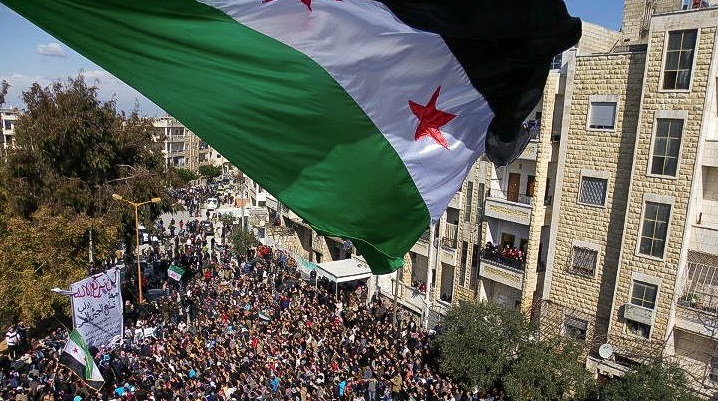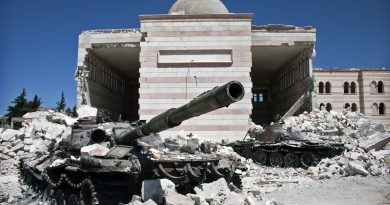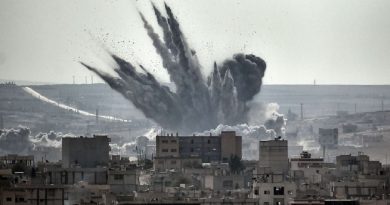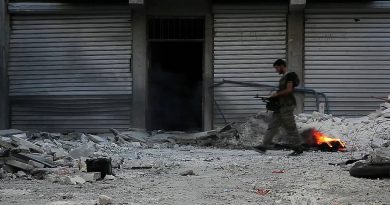New Syrian Drama in Idlib
As the seven-year civil war in Syria is reaching an end, all warring parties are getting ready for the final battle.
As expected, a military offensive of the Syrian Government in the province of Idlib is approaching in the northwestern part of the country, near the Turkish border.
This region is the last in Syria which is in the hands of the opposition to the regime of president Assad. The issue is that Idlib is not controlled by one opposition group, but number of them which are not cooperating between themselves. This in turn could lead them into the new conflict. The strongest amongst them is the group Hay`at Tahrir al-Sham (HTS), connected to al-Qaida, with about 10,000 fighters. The United Nations are treating this organization as a terrorist group, and between their ranks there are many foreigners.
Second is the National front for Liberation (NLF), supported by Turkey, which is in conflict with HTS. Additionally, there are the Ahrar al-Sham and Nour al-Din al-Zenki, along with parts of the Free Syrian Army. In total, the opposition has in Idlib about 30,000 fighters.
This kind of resistance would not be a serious problem for the army under the control of the Government in Damascus if these were not a group of ideologically determined fighters, who already showed in previous battles a clear devotion to their goals. Besides that, the current situation in Syria is at that stage where the members of these organizations have no place to withdraw themselves, so they have to fight for survival.
In Idlib there are about 3 million Syrians, out of which 1 million are children. Fighting would definitely expose the civilian population to great danger and suffering, which would also influence the western governments through media coverage to pressures to do something about it.
The Syrian Government has the support of Russia and Iran, which means that its victory cannot be doubted any longer. On the other hand, Turkey’s priorities, made obvious at the recent meeting of the representatives of the three countries in Teheran, are shifting to the level of a humanitarian crisis. This is in order to avoid the potential arrival of the new wave of Syrian refugees (in Turkey there are already 3 million).
As it is well known, the support of the west to the Syrian opposition did not produce the expected outcome and president Assad managed to secure his power. The turn was obvious when the Americans decided to avoid deeper military involvement into the Syrian civil war, not knowing who should be helped and having in mind the unpredictable possible results stemming from the overthrow of president Assad. American experiences from Iraq and Libya convinced former president Obama that the USA have no solution for the re-building of postwar democratic Syria. In the meantime, the Syrian leader got the support from Iran, which is quite significant. Additionally, he was strengthened by the military involvement of the Russian Federation. The Russians assisted through multiple air attacks on the oppositions forces, justifying them with the need to fight terrorists.
As the civil war in Syria is approaching its end, it is obvious that the regime in Damascus has no intention to leave any part of the territory in the hands of the opposition. President Assad only now has the chance to round off his recovery after the deep crisis which ensued in the beginning of the civil war and he is not going to miss the opportunity. The only question is how is he going to do it, not to provoke another round of western involvement in the war.
It is hardly probable that the strong American rhetoric’s which is used in Washington to warn Assad against the offensive in Idlib, would be translated into the new chapter of this bloody conflict. Even if there would be an American attack on Assad’s forces, it would be limited and not long lasting. It would have to be preannounced to the Russian side, to avoid the clashes between two super powers. This kind of attack would be primarily aimed to appease the internal political pressures in USA and minimize the military power of the Government in Damascus; thus resolving nothing.
Substantial civilian casualties in Idlib would not be in the interest of Russia or Iran for purely propaganda reasons. This means that all involved sides would be ready to look for a military solution which would result in the return of Idlib under Assad control, without causing a big number of civilian casualties.
USA obviously has difficulties in defining its future military moves in Syria. Their eventual help to the opposition in Idlib could be interpreted as military support to the organizations linked to al-Qaida, which would be completely unacceptable. The military goal for the Americans in Idlib could be to preserve an enclave of resistance to Assad, which could potentially spread in the future to other parts of the country and keep in that way some pressure on the Government in Damascus. How can one achieve that and not support the al-Qaida connected groups? Most likely this is not even clear to the military strategists in Washington.
In the coming days, there could be many meetings and discussions among all those who are involved, directed to the resolution of the humanitarian issues. Those topics will always be deeply connected to the military goals of Damascus, as well as Turkey, Russia, Iran and USA.
Syrian civilians can once again receive the role of the main victims of this round of the civil war, if their rescue attempts come in conflict with the strategic goals of generals on any of the involved sides.
That would not be the first case of this kind in the Middle East.
Syria independence flag flies over a large pathering of protesters in Idlib. Photo by Freedom House / CC BY 2.0
The opinions expressed in this blog are solely the authors’ point of view and do not bind the Center for International Studies, its Director or any other researcher.
![]() This work is licensed under a Creative Commons Attribution-NonCommercial-ShareAlike 4.0 International License.
This work is licensed under a Creative Commons Attribution-NonCommercial-ShareAlike 4.0 International License.




